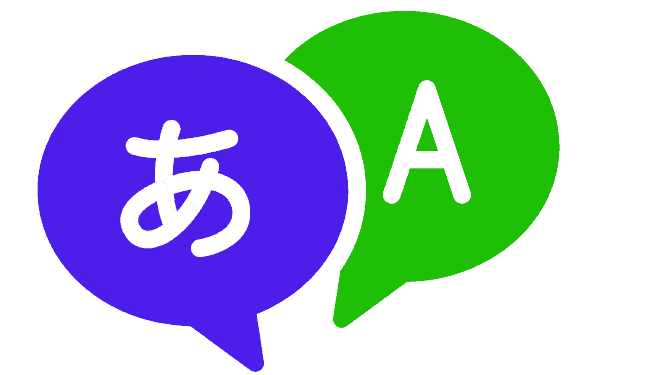Are you tired of traditional language learning methods?
Do you struggle to find the time or motivation to attend language classes?
Maybe it’s time to try something new – language learning apps!
Let me tell you a story about a student of mine named Anna. Anna had always been interested in learning Spanish, but her busy schedule made it difficult for her to commit to regular language classes.
She tried using traditional language learning materials, but found it difficult to stay motivated and didn’t see much progress.
One day, Anna stumbled upon a language learning platform and decided to give it a try. To her surprise, she found the app to be incredibly effective and engaging, and she was able to make more progress in just a few weeks than she had in months of traditional study.
Anna’s experience is not unique – language learning applications have become increasingly popular in recent years, and for good reason.
These apps provide a flexible and convenient way to learn a new language, and can be customized to suit your individual learning style and goals.
But how effective are language learning apps? In this comprehensive review, we’ll take a closer look at the effectiveness of these platforms, their benefits & shortcomings, and my recommendations to use them the right way.

Advantages of Language Learning Apps
If we look at the past 5 years, language learning apps have gained popularity primarily because of their practicality and efficiency.
But why?
The following are some benefits of using language-learning apps:
Convenient and availability
Students who are on the go may readily access language learning applications by downloading them to a smartphone or tablet. With the app in their hands, students are no longer restricted to a classroom or set study schedule and may study whenever and wherever they choose.
Cost Effective
Most language learning applications are either free or reasonably priced, making them available to students from all financial levels. As a result, students may obtain top-notch language learning resources without having to pay astronomical costs.
Dynamic and engaging
Language learning applications are made with elements like games, tests, and audio-visual aids that keep students interested and motivated. As a result, learning a new language may be pleasurable and engaging.
Provide immediate feedback
Apps that teach languages provide students quick feedback on their development, enabling them to spot their weak points and concentrate on strengthening them. This might be especially beneficial for students who want to learn alone and at their own speed.
The majority of language learning applications feature built-in tracking systems that enable users to check their progress and modify their learning objectives as necessary. This can support students in maintaining their drive and attention while working toward their language learning goals.
Variety of languages offered
Due to the large number of languages offered by language learning applications, learners can chose any language they are interested in learning, regardless of how unusual it might be.
Overall, using language learning apps to learn a new language is practical and efficient. They provide students a range of benefits that make learning languages easier and more pleasant, which may eventually result in higher success in developing language competency.
The Limitations
While there are numerous benefits to using language learning apps, there are certain drawbacks that users should be aware of. Here are some of the most typical drawbacks of language learning apps:
Lack of face-to-face communication

Because language learning applications are mostly self-directed, students are unable to communicate in real time with an instructor or native speaker. This might be problematic since learners might not get tailored feedback or opportunities to use their language abilities in authentic situations.
Pronunciation problems
Many language learning applications teach pronunciation through text and audio recordings, which can be constricting for students who have trouble with this part of language acquisition. It could be challenging for students to get better at pronouncing words without a live instructor to offer criticism and guidance.
Limited in terms of complex language skills
While language learning apps can be useful for teaching fundamental grammar and vocabulary, they might not be as useful for teaching more advanced language abilities like writing or public speaking. These abilities often necessitate for more specialized teaching and feedback.
Generic course structure
Language learning software may be overly concentrated on teaching fundamental grammar and vocabulary without giving students adequate chances to use their acquired knowledge in practical situations. As a consequence, students may find it challenging to apply what they have learned in a practical setting.
The precise learning requirements of each individual learner may not be catered to by language learning applications because they are made to be generalizable and adaptable to a large range of learners. For certain language learners to succeed, a more individual assessment may be necessary.
Effectiveness of language learning apps
Many studies and discussions have looked into the effectiveness of language learning apps. Key conclusions are as follows:
Studies on the effectiveness of language learning apps have indicated that they can be useful for enhancing learners’ grammar and vocabulary abilities, particularly when used in conjunction with other language learning approaches.
Very little known about how well apps work to hone more sophisticated language abilities, including writing or public speaking.
According to MSU’s professor Shawn Loewen, language learning apps are good to start with as a beginner. You can learn some vocabulary but it’s much harder to learn the ability to communicate & respond i effective way.
Numerous language learners have reported using language learning apps to achieve fluency. These success stories highlight the effectiveness of language learning apps when used consistently and in combination with other language learning resources.
Generally, studies and anecdotal evidence indicate that language learning apps may be a useful tool for language learners, even though their usefulness may vary based on the learner’s specific requirements and goals.
To enhance the efficacy of language learning apps, learners should use them consistently and in combination with other language learning materials such as textbooks, language exchange programs, and conversation practice with native speakers.
My Recommendations for using language learning apps effectively

As a French teacher for nearly 4 decades, I am sharing the ways following which you can make most of these apps during your learning journey:
Complement other language learning techniques:
Although they can be a useful tool for learning a new language, language learning apps shouldn’t be used as the only way of instruction.
The use of textbooks, language exchange programs, or practice conversations with native speakers should be added to language learning applications to increase their efficacy. Using a variety of materials may provide students a more thorough learning experience and aid in their acquisition of a better knowledge of the language.
Use apps that cater to individual learning styles
Various students have distinct tastes and learning preferences. Some learners may prefer visual learning, while others may prefer auditory learning. It’s crucial to take into account your unique learning preferences and select a language learning platform that fits those.
While some applications focus on a particular learning mode, others may offer a number of learning modes including interactive, oral, or visual. By selecting an app that fits your learning preferences, you may increase the effectiveness and enjoyment of your language study.
Practice regularly and consistently
Consistent practice is key to achieving fluency in a second language. The app should be used regularly by language learners who include it into their everyday routine. This will assist students in developing the routine of constant practice, which is crucial for language learning. Regular practice also enables language learners to build on prior understanding and advance over time.
Prioritize speaking and listening abilities
While language-learning applications may concentrate on reading and writing abilities, speaking and listening abilities should also be given top priority.
In order to exercise these abilities with native speakers, language learners should look for opportunities to do so, either through conversation practice or language exchange initiatives.
For effective communication, speaking and listening skills are essential, and honing these abilities may give language learners more self-assurance while using the language.
Look for opportunities to practice and engage with people
The lack of human interaction in language learning applications is one of its drawbacks. Language learners should look for opportunities for practice and human connection to get over this.
But how is it possible? This can be done through language exchange programs, conversation practice with native speakers, or taking language classes with a teacher. Through human connection, students receive individualized feedback and have a chance to use their language abilities in authentic situations.
These suggestions can help language learners make the most of language learning programs and succeed in their language learning objectives.
Conclusion
To conclude, language learning mobile applications have a number of benefits, including comfort, adaptability, cost, and individualized instruction. They also have several drawbacks, including a shortage of social engagement, a constrained capacity for providing tailored feedback, and a narrow concentration on particular linguistic abilities.
Even so, when incorporated within a thorough language learning strategy, language learning applications may be useful tools for language learners. Language learners should augment other resources with language learning applications, practice frequently and consistently, and concentrate on speaking and listening abilities.
Overall, a number of variables, including the learner’s objectives, preferences, and learning style, affect how successful language learning applications are. Although while they might not be appropriate for all students, those who utilize language learning applications properly might benefit from a rewarding educational experience.
As a result, I advise language learners to utilize language learning apps in conjunction with other language learning tools in order to accomplish their language learning objectives.

Meet Bill, a French language teacher and blogger who specializes in testing various language learning apps. He has been teaching French for nearly 4 decades and holds a Bachelor’s degree from Manhattanville College. With a passion for technology and how it can enhance language learning, Bill has spent years testing and reviewing different language learning platforms. His blog provides valuable insights into the pros and cons of each app, as well as tips for language learners of all levels.
